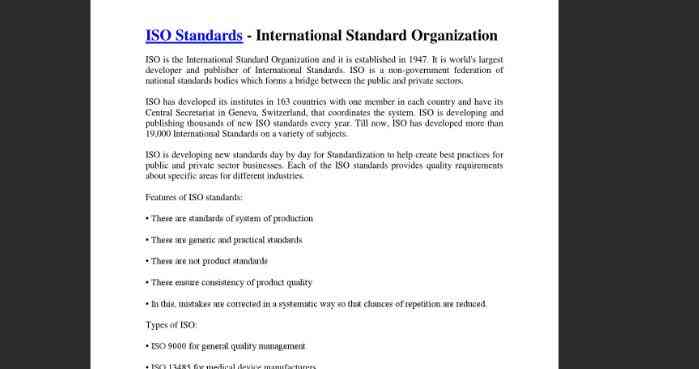|
REPORT 13387-4
First edition
1999-10-15
Fire safety engineering —
Part 4:
Initiation and development of fire and
generation of fire effluents
Ingénierie de la sécurité contre l'incendie —
Partie 4: Amorçage et développement des feux et production des effluents
du feu
A
Reference number
ISO/TR 13387-4:1999(E)
---------------------- Page: 1 ----------------------
ISO/TR 13387-4:1999(E)
Contents
1 Scope .1
2 Normative references .1
3 Terms and definitions .2
4 Symbols and abbreviated terms .3
5 Subsystem 1 of the total design system .5
6 Subsystem 1 evaluations.5
6.1 General.5
6.2 Initiation of fire.6
6.3 Fire development .13
6.4 Smoke production .20
6.5 Species generation.23
7 Engineering methods .27
7.1 General.27
7.2 Estimation formulae .28
7.3 Computer models .28
7.4 Experimental methods .29
(informative)
Annex A Smoke measurement units .31
Bibliography.33
© ISO 1999
or by any means, electronic
or mechanical, including photocopying and microfilm, without permission in writing from the publisher.
International Organization for Standardization
Case postale 56 • CH-1211 Genève 20 • Switzerland
Internet [email protected]
Printed in Switzerland
ii
---------------------- Page: 2 ----------------------
© ISO
ISO/TR 13387-4:1999(E)
Foreword
ISO (the International Organization for Standardization) is a worldwide federation of national standards bodies (ISO
member bodies). The work of preparing International Standards is normally carried out through ISO technical
committees. Each member body interested in a subject for which a technical committee has been established has
the right to be represented on that committee. International organizations, governmental and non-governmental, in
liaison with ISO, also take part in the work. ISO collaborates closely with the International Electrotechnical
Commission (IEC) on all matters of electrotechnical standardization.
The main task of ISO technical committees is to prepare International Standards, but in exceptional circumstances a
technical committee may propose the publication of a Technical Report of one of the following types:
type 1, when the required support cannot be obtained for the publication of an International Standard, despite
repeated efforts;
type 2, when the subject is still under technical development or where for any other reason there is the futu
...














